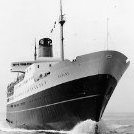TEV Wahine by Richard Dunn - Radio - scale 1:35 - 1965
- Large scale model ship
- 1/35 scale model
- TEV Wahine
- Wahine Disaster
- Radio Controlled model ship
- Union Steamship Company
- Richard Dunn
- Stepcraft 840
- Model Ship building
- 1/35 scale ship model
- RC ship models
- Bread and Butter hull
- Wahine plans
- Turbo Electric vessel
- Wahine sinking
- realistic ship model
- realistic plating on model ship
- Rhino3d
- rhinocerous 3d
-
Recently Browsing 0 members
- No registered users viewing this page.


Recommended Posts
Join the conversation
You can post now and register later. If you have an account, sign in now to post with your account.